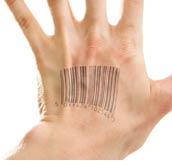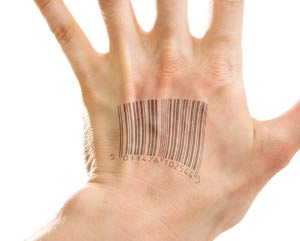
Beyond Fingerprints
Canadian port gets futuristic with vascular biometrics
- By Megan Weadock
- Jan 31, 2008
 The United States isn’t the only country that’s cracking down
on border security standards to deal with heightened global
threats. In Canada, recent restrictions at marine ports, similar
to the TWIC program, demand that officials step up their
access control methods.
The United States isn’t the only country that’s cracking down
on border security standards to deal with heightened global
threats. In Canada, recent restrictions at marine ports, similar
to the TWIC program, demand that officials step up their
access control methods.
The new requirements, which were established in Canada in 2003,
inspired the Halifax Port Authority to begin using advanced access control
readers at the Port of Halifax in Nova Scotia. However, the inherent
nature of the port environment created a number of challenges to
installing an access control system, which left port officials looking
only for the best of the best.
Unique Challenges
The world’s second-largest ice-free port, the Port of Halifax is a key
transportation hub for the region and serves as Canada’s East Coast
connection to worldwide trade. On average, Halifax’s winter temperatures
rarely climb above freezing, and the city experiences about 6 inches
of precipitation each month through the coldest time of the year.
These challenging conditions made choosing the right access control
system vital.
Previously, the port’s facilities were protected by security staff who
screened individuals and vehicles. The rail gates were locked, which
required security personnel to open and close them after use and stand
by while trains moved through. This time-intensive process got in the
way of work at the port—and once Canada’s new standards came down
in 2003, all the access points at the port would have required a security
official, an extremely expensive prospect.
As with many companies that are looking at biometric access control,
many of the port’s employees expressed concern about their privacy.
The perception was that fingerprint scanners are a little too “Big
Brother” and not quite secure enough—after all, people leave fingerprints
everywhere they go.
The final issue was usability. Halifax Port Authority officials knew
that the harsh conditions of a port do not lend themselves to sensitive
fingerprint scanners. Workers with rough, cold hands often experience
problems when trying to scan their fingerprints. And retina scanners can
cause long wait times, as workers have to remove goggles or coldweather
clothes to fully reveal their eyes.
Deploying Advanced Biometrics
Luckily, one access control system could address all these obstacles.
Identica Canada Corp., a wholly owned subsidiary of U.S.-based
Identica Holdings Corp., teamed up with Unisys Canada to deploy a
biometric credentialing and access control database system in the Port
of Halifax using Identica’s hand vascular pattern recognition technology.
With Identica’s Vascular Pattern Scanners (VP-II) and HID iCLASS
smart cards, the port now strengthens security and manages access control
for more than 4,000 of its workers.
“Vascular biometrics is the ideal solution for secure access control
in a working environment, as it is more accurate and doesn’t have the
well-known operational difficulties of other biometric technologies,”
said Gord Helm, manager of marine security and cruise operations for
Halifax Port Authority. “Identica’s vascular biometric technology provides
complete technological competence and easily integrates into our
current system.”
The scanners are installed at the port’s main administration building,
security offices, rail gates and cruise facility, as well as the gates and
remote parking sites into the facility’s marine terminals.
Identica’s VP-II scanners use recognition algorithms to capture and
encrypt individuals’ unique vascular patterns on the back of the human
hand. The individual presents his or her hand to the scanner, and the live
vascular pattern is matched to a stored template. At the Port of Halifax,
each worker’s unique personal template is encrypted on a smart card,
and the scanner communicates with Identica’s proprietary Universal
Controller and biometrically verifies the user with the stored template
on the media. The smart card adds an additional layer of security—if an
employee ever loses a card, no one else can use it.
“We spent 18 months working with the port stakeholders an industry
to identify a technology that labor could live with and that would
satisfy the operational objectives of the port,” Helm said. “We also were
mindful of the federal requirement to authenticate the holder of a card
The Right Solution
Two-thirds of the biometric scanners at the port are located outside.
Identica’s Weather Shield heated outdoor enclosures support operation
in all weather conditions and use antimicrobial silver treatment, which
kills 99.9 percent of germs.
The scanners offer 99.98 percent system usability, so the number of
workers who simply can’t use the scanners—a more common problem
with fingerprint biometrics—is practically a non-issue. The VP-II
scans 4 millimeters below the surface of the skin, avoiding these problems
altogether.
Terry Wheeler, president and COO of Identica Holdings Corp., said
the issue of speed also was solved with the VP-II.
“A lot of these workers are going to be coming in on shift changes,
and they were very concerned that there would be a bottleneck at the
access points,” he said. “Our device verifies in 0.1 of a second. It’s
quicker than any other biometric.”
As for security, Wheeler said the vascular scanners have made all
the difference.
“Because we go below the surface of the skin, users can’t leave the
template behind inadvertently, like you can a fingerprint,” he said. “It’s
an advantage because you can’t actually see the part of the body that
we’re taking the template from. There are no databases of vein patterns,
and users don’t feel it’s intrusive, whereas a fingerprint is very intrusive
and everyone feels like their print is going to be compared to police
databases.”
Clearly, the vascular biometric scanners at the Port of Halifax were
the right tool for the job. And as the field of biometrics continues to
grow, vein-reading scanners may emerge as the technology of choice in
other challenging settings.
“Some people may have not heard about vascular, but that tide is
changing very quickly now,” Wheeler said. “You’re going to see a lot
going on in the vascular area over the next year, and it’s going to be one
of the prominent biometrics very soon. Users are now realizing the need
for an easier-to-use, less intrusive biometric
that works in real environments.”
This article originally appeared in the issue of .